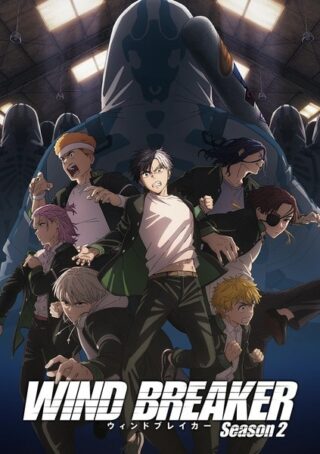
Overview:
Wind Breaker Season 2 continues to captivate anime fans with its thrilling portrayal of delinquent gang rivalries, deep character development, and visually stunning action sequences. Building on the momentum of the first season, this second installment expands the world, elevates the stakes, and introduces new layers of emotional and narrative complexity. In this detailed article, we will explore every facet of Wind Breaker Season 2, from its storyline and characters to animation quality, music, and what fans can expect moving forward.
Introduction: The Phenomenon of Wind Breaker
Wind Breaker is a Japanese anime adaptation of the popular webtoon series that focuses on the intense lives of high school delinquents. The anime first gained acclaim for its dynamic fight choreography, gripping storytelling, and strong, relatable characters. Its unique blend of urban action and emotional drama set it apart in a genre that often leans heavily on either one or the other.
Season 2 premiered in April 2025, continuing the story of Bofurin High’s most notorious gang and their ongoing turf wars. Produced by CloverWorks, the second season promises 12 episodes packed with heart-pounding battles, unexpected alliances, and moments of heartfelt introspection.
Storyline and Plot Development
The central narrative of Wind Breaker revolves around Bofurin High School’s gang and their battles against rival factions that threaten their dominance and safety. Season 2 significantly expands this world, introducing new groups, new conflicts, and deeper motivations behind the characters’ actions.
Continuation of the Turf Wars
The season picks up directly after the events of Season 1, where Bofurin established itself as a formidable force in the delinquent scene. However, peace is fleeting. Two major factions, Roppo Ichiza and Gravel, emerge as powerful rivals, each with their own agendas and fighting styles. Their arrival disrupts the fragile balance, leading to a series of territorial disputes, alliances, and betrayals.
The tension between these groups culminates in what fans call the Roppo Ichiza Arc — a highlight of Season 2 known for its intense fights and strategic warfare. Unlike many anime where fights are chaotic and overly stylized, Wind Breaker maintains a sense of realism and grounded tactics. This arc also introduces viewers to the organizational structures and philosophies of these rival gangs, revealing the depth of their operations beyond just street fighting.
Exploration of Tasuku Tsubakino’s Backstory
One of the season’s standout features is the exploration of Tasuku Tsubakino, a key figure whose background and motivations are shrouded in mystery during Season 1. Season 2 dedicates several episodes to unraveling his past, showing how his experiences shaped his outlook and alliances. This deep dive not only humanizes Tasuku but also provides insight into the emotional scars and personal codes that drive many characters in the series.
His story arc is emotional and raw, touching on themes of loyalty, regret, and redemption. The storytelling here balances action and dialogue, giving viewers a breather between battles while still advancing the overall plot.
Increasing Complexity of Power Dynamics
As the season progresses, it becomes clear that the turf wars are not simply about physical domination but also involve strategic positioning, psychological warfare, and complex interpersonal relationships. The shifting alliances and internal conflicts within each gang add layers of intrigue, making it difficult to predict who will come out on top.
This complexity elevates Wind Breaker from a typical delinquent anime to a nuanced drama about power, friendship, and the search for identity in a world ruled by violence and respect.
Characters and Their Development
A major strength of Wind Breaker Season 2 lies in its well-rounded characters who grow significantly throughout the series. The season does not just rely on new characters but also deepens the personalities and motivations of familiar faces.
The Protagonist and Bofurin’s Leadership
The main protagonist, who is also the leader of Bofurin’s gang, continues to mature as a leader and fighter. His journey is marked by tough decisions, moral dilemmas, and the burden of responsibility. Throughout the season, viewers see him evolve from a hot-headed youth into a more strategic and thoughtful leader who inspires loyalty through both strength and compassion.
His interactions with teammates and rivals highlight different facets of his personality—from fierce determination and protectiveness to moments of vulnerability and self-doubt. This layered characterization makes him relatable and compelling.
Tasuku Tsubakino
Tasuku’s introduction and subsequent development are crucial to the season’s emotional depth. His personal story intertwines with the larger gang conflicts, adding tension and emotional stakes to the battles. His presence challenges the protagonist and others, forcing them to confront their beliefs about loyalty and trust.
Supporting Characters and Rival Factions
The rival factions are not just faceless enemies but are filled with intriguing characters each with their own codes and motivations. For example:
Members of Roppo Ichiza bring diverse fighting styles and personalities, from cold strategists to passionate fighters.
Gravel’s faction emphasizes brutality and raw power, contrasting with Roppo Ichiza’s more calculated approach.
Within Bofurin, secondary characters are given more screen time and development, showing how the gang operates as a unit. Characters like the loyal second-in-command, the tech-savvy strategist, and the fiercely protective friends add depth and variety to the story.
Animation and Visual Style
Produced by CloverWorks, Wind Breaker Season 2 continues to impress with its high-quality animation and artistic direction.
Fluid Fight Sequences
The fight scenes are the highlight, featuring a blend of martial arts, street fighting, and tactical maneuvers. Unlike many anime that exaggerate physics, Wind Breaker keeps movements grounded and believable, which makes the action feel more intense and impactful. The use of dynamic camera angles and quick cuts enhances the excitement without overwhelming the viewer.
Character Designs
The characters retain their unique looks from Season 1 but with slight improvements and more expressive animations that capture subtle emotions during dialogue-heavy scenes. The attention to detail in facial expressions and body language contributes significantly to storytelling.
Environmental Design
The setting combines urban landscapes with school environments and underground fight arenas, each rendered with realistic textures and lighting. The cityscapes at night, with their neon lights and shadows, create a moody atmosphere that perfectly fits the delinquent world.
Color Palette
The series uses a balanced color palette—bright, saturated colors for moments of hope and camaraderie, and darker, muted tones during tense or violent scenes. This visual contrast helps convey the emotional tone without relying solely on dialogue or music.
Music and Soundtrack
The soundtrack of Wind Breaker Season 2 plays a vital role in setting the mood and amplifying the emotional beats.
Opening and Ending Themes
The opening theme, “Boyz” by SixTones, is a high-energy track that captures the rebellious spirit and youthful energy of the series. It features catchy rhythms and lyrics about struggle, camaraderie, and fighting for one’s place in the world.
The ending theme, “It’s myself” by shytaupe, provides a more introspective and emotional tone, reflecting the characters’ inner conflicts and growth. This balance between energetic openings and reflective closings helps frame each episode effectively.
Background Score
Throughout the episodes, the background music varies from adrenaline-pumping beats during fight scenes to softer, more melodic pieces during emotional or contemplative moments. The sound design also pays close attention to environmental sounds, like footsteps, punches, and ambient city noise, enhancing the realism and immersion.
Themes and Symbolism
Wind Breaker Season 2 explores a variety of themes that go beyond the surface-level fight scenes and gang conflicts.
Brotherhood and Loyalty
One of the core themes is the bond between gang members. Despite their rough exterior and violent lifestyle, the characters exhibit strong loyalty and protectiveness toward their friends. These relationships are tested repeatedly, emphasizing the importance of trust and sacrifice.
Identity and Growth
The anime explores how the characters struggle with their identities—not only as delinquents but as individuals trying to find their place in the world. Many characters face moments of self-doubt and must decide whether to continue down a path of violence or seek a different future.
Power and Responsibility
With new rival factions threatening Bofurin’s territory, the theme of power—both physical and political—comes to the forefront. Leaders must balance aggression with strategy, and the show probes the costs of wielding power in such a harsh environment.
Redemption and Forgiveness
Tasuku Tsubakino’s arc in particular focuses on themes of redemption and the chance to make amends for past mistakes. This adds emotional depth and shows that even in a violent world, there is room for change.
Reception and Fan Response
Season 2 of Wind Breaker has been well received by fans and critics alike. Many praise the improved pacing, richer character development, and higher animation quality compared to the first season. The introduction of new rival factions and deeper emotional arcs has been highlighted as a major step forward.
Viewers often note that the show stands out among delinquent-themed anime because of its realistic portrayal of fights and the way it handles complex character emotions. Fans have also expressed excitement over the strategic elements introduced in the new arcs, which add a refreshing layer to typical gang conflict stories.
What’s Next? Future Prospects
As Season 2 continues to unfold, the tension between Bofurin, Roppo Ichiza, and Gravel is expected to reach its climax. Viewers can anticipate high-stakes battles, emotional confrontations, and significant character turning points.
The ending of Season 2 will likely set the stage for a third season or additional adaptations, as the story has many avenues to explore—whether expanding the universe, diving deeper into character backstories, or focusing on new threats and alliances.
Conclusion
Wind Breaker Season 2 successfully builds on the foundation laid by its predecessor, offering a thrilling, emotionally charged, and visually impressive continuation of the story. With a strong focus on character development, strategic conflicts, and grounded fight choreography, it appeals to fans who crave substance alongside action.
The season’s ability to balance intense street fights with moments of vulnerability and growth makes it a standout in the delinquent anime genre. Whether you’re a returning fan or new to the series, Wind Breaker Season 2 promises an engaging and satisfying viewing experience that leaves you eagerly awaiting what comes next.
Characters and Voice Actors
Nirei, Akihiko
MainChiba, Shouya
JapaneseSakura, Haruka
MainUchida, Yuuma
JapaneseSuou, Hayato
MainShimazaki, Nobunaga
JapaneseAnzai, Masaki
Supporting-
JapaneseEndou, Yamato
SupportingEnomoto, Takeshi
SupportingMurata, Taishi
JapaneseHiiragi, Touma
SupportingSuzuki, Ryouta
JapaneseKaga, Renji
Supporting-
JapaneseKaji, Ren
SupportingOkamoto, Nobuhiko
JapaneseKakiuchi, Yuuri
SupportingKobayashi, Daiki
JapaneseKirishima, Shiyuu
SupportingBonkobara, Kou
JapaneseKiryuu, Mitsuki
SupportingToyonaga, Toshiyuki
JapaneseKongou, Takeru
Supporting-
JapaneseKurita, Junpei
SupportingSugawara, Shinsuke
JapaneseKusumi, Yuuto
SupportingMatsumoto, Youdai
SupportingMogami, Taishi
Supporting-
JapaneseNagato, Atsushi
SupportingFuruya, Anan
JapaneseNakamura, Kanji
SupportingNarita, Shizuka
SupportingNatori, Shingo
SupportingEnoki, Junya
JapaneseSakaki, Uryuu
SupportingUra, Kazuki
JapaneseSakaki, Seiryuu
SupportingSaitou, Souma
JapaneseSugishita, Kyoutarou
SupportingUchiyama, Kouki
JapaneseSuzuri, Shuuhei
SupportingTachibana, Kotoha
SupportingHasegawa, Ikumi
JapaneseTakanashi, Tsukasa
SupportingNogami, Shou
JapaneseTone, Hansuke
Supporting-
JapaneseTsubakino, Tasuku
SupportingOosaka, Ryouta
JapaneseTsuchiya, Mio
SupportingYuikawa, Asaki
JapaneseTsugeura, Taiga
SupportingKawanishi, Kengo
JapaneseUmemiya, Hajime
SupportingNakamura, Yuuichi
JapaneseYanagida, Jien
Supporting
Show All
Recomended For You!
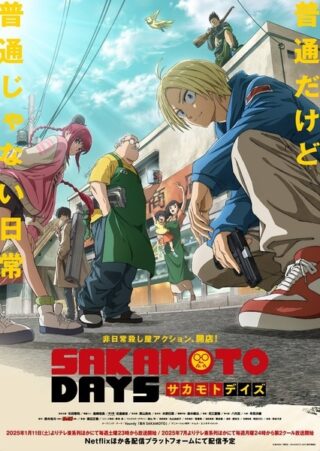
E?
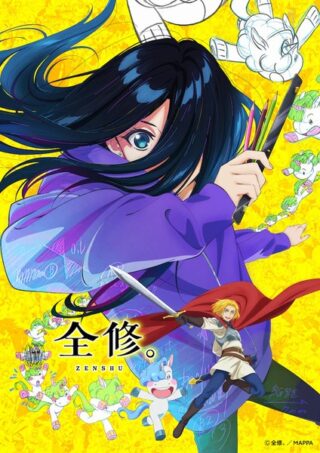
E?
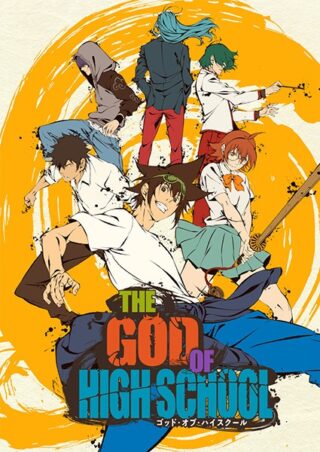
E?

E?
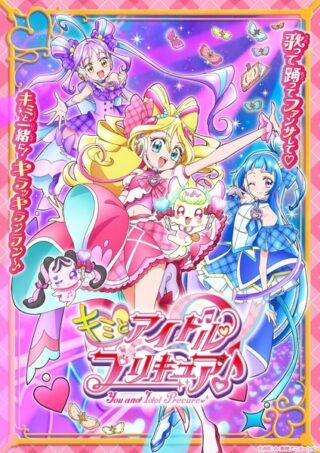
E?
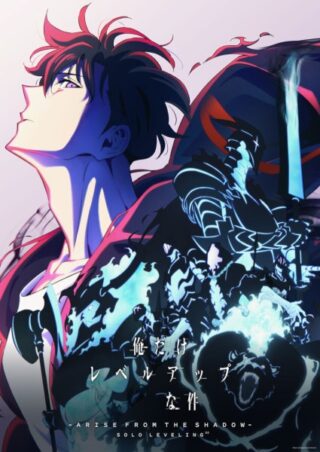
E?
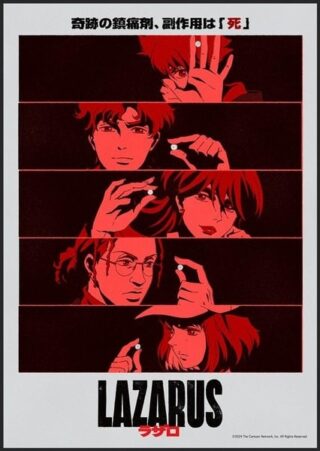
E?
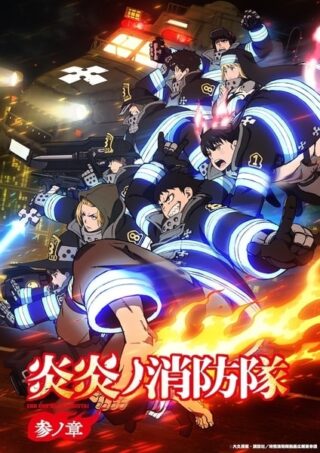
E?